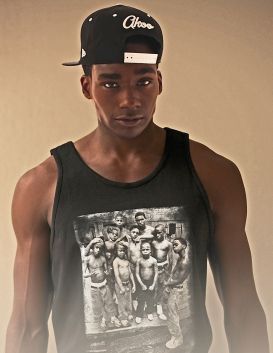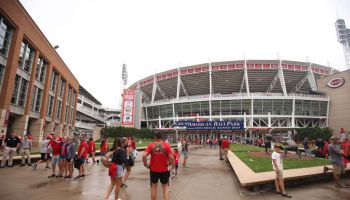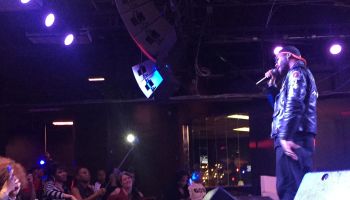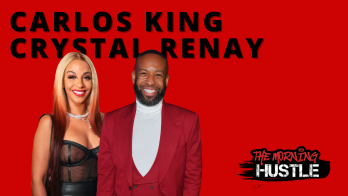 Speaking of elevating the culture, when you first were working with Richard Avedon, did you plan to become Hip-Hop’s documentarian through your photos?
Speaking of elevating the culture, when you first were working with Richard Avedon, did you plan to become Hip-Hop’s documentarian through your photos?
Avedon was such an incredible start for me. It was really like getting a PhD in photography and human interaction and how teams work. It also taught me how to elevate the star you’re working with on any given day. To be able to see the biggest jobs that were being done in the industry like the Pirelli calendar or the Versace campaign, it was amazing to see him interact with people. I took most from that lesson was how you engage an artist and sort of “impose your vision” through collaborative conversation. It’s not all about the photographer’s vision. I think one of the greatest compliments I’ve ever received is an artist coming up to me and saying, “When I look in the mirror, I see that picture.”

Ultimately, my attachment to the Hip-Hop movement started many years before I started working with Avedon. I didn’t walk in like, “Yo. I’m gonna take over this Hip-Hop thing. This is cute.” I was already apart of that lifestyle. You know Big Daddy Kane, Kool Moe Dee, Slick Rick, A Tribe Called Quest–I was a fan of the music from 1988 to 1993. Then I moved to New York. So I brought a vast knowledge of DJing, doing college radio, knowing records that were breaking, dancing in the clubs as a young kid from Cleveland would be. I applied all of those sensibilities to an industry that I fought to have access to. Then I just truly continued to honor the true tenants of Hip-Hop culture. So my personal and professional work became the same thing.
When you’re photographing a subject–be it a person or random object–what exactly are you trying to capture?
I think it depends on the scenario. It’s a beautiful gift for a photographer to able to explore the contents of his or her brand. You add a different sensibility to it because you are trying to heighten or make beautiful either a person in that moment or an object. Graphically, it should appealing and it should be technically sound and all of that, but really it’s operating from a position of passion as somebody that’s chosen to bring a message of a clarity of vision to the rest of the world. For me, it just comes down to passion. It sounds so cheesy, but I really want to capture a piece of the heart and soul of the person that I’m working with. In portraits, I want to create the definitive portrait of that person in that moment.
I’ve asked other photographers that same question and they always say something cliché like the truth.
The truth is inherent in that. I want my subjects to feel how passionate I am about making them look incredible. Even Avedon spoke about this, the truth in a photograph is not necessarily the truth about the entire day. It’s absolutely a factual representation because you can’t manipulate a moment.
I can take pictures of DMX and all the way through the shoot he can have the grumpiest, most thugged out face and then I get him to laugh for one frame because of me saying something stupid–it is the truth about who that person was in that moment. That moment of laughter was the truth, but there’s also a whole other thing that’s represented by these other mean mugs of a life in struggle or whatever the case may be. It is the truth, but it might not be the reflection of that person’s personal truth.
You’ve also directed music videos. I’m one of those people who looks for a signature in video directors. With Hype Williams, it’s the fish eye lens and the red and green lights. What’s your signature?
The truth. [laughs] No, I approach everything differently. I like to think I have a different approach than many of the shooters out there. I really want to have key conversations with people about what they’re trying to achieve. So I’m hitting the target for the actual artist and trying to tell a richer story.
I think there is a signature and formula for certain people and that’s why you’re able to find a signature look. That’s not to say that a formula is the wrong approach. People like Hype Williams or Little X have signatures and formulas and they work and they’re appealing and great and executed on the highest level.
I can definitely see a thread of passion and wanting to do things in a different way. If you look at Game‘s “One Blood” and then Trinidad James‘ “Females Welcome,” they both have a grit and there’s an elegance in these sort distressed textures. I see a thread in my work, but I think it’s a different thread than what’s being held as the prime examples of Hip-Hop videos.
I want to work with people who want to work with me. I’m not for everybody. If you don’t want to work with me, that’s fine. There are fifty other people other there who will shoot probably cheaper. But I will give you one million trillion percent. So if you want to come drive a Bentley, come drive the Bentley. [laughs]
READ MORE HOT EXCLUSIVE INTERVIEWS ON THEURBANDAILY.COM:
Jesse Boykins III Defines Soul & The Shady Politics Of The Music Business [EXCLUSIVE]
Yung Joc Talks New Music, Role On Reality TV & If Egotism Ruined Hip-Hop [EXCLUSIVE]
Ahmad Givens Gets ‘Real’ About Colon Cancer Battle [EXCLUSIVE]
Jonathan Mannion Talks Documenting Hip-Hop & Lessons From Photography Masters [EXCLUSIVE] was originally published on theurbandaily.com

















